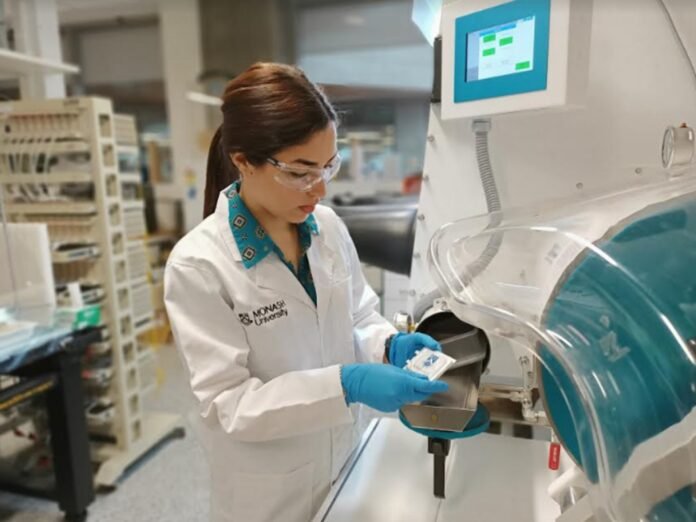Simply by adding sugar, researchers from the Monash Energy Institute have created a longer-lasting, lighter, more sustainable rival to the lithium-ion batteries essential for aviation, electric vehicles and submarines.
By using a glucose-based additive on the positive electrode, researchers have managed to stabilize lithium-sulfur battery technology, long touted as the basis for the next generation of batteries. The sugar basically addresses the inherent stability issues, a move that keeps the experimental cells ticking across more than 1,000 cycles.
“In less than a decade, this technology could lead to vehicles including electric buses and trucks that can travel from Melbourne to Sydney without recharging. It could also enable innovation in delivery and agricultural drones where lightweight is paramount,” says lead author Professor Mainak Majumder from the Department of Mechanical and Aerospace Engineering and Associate Director of the Monash Energy Institute.

Theoretically, Lithium-sulfur batteries may hold two to five times more power than lithium-ion batteries. But during use, the electrodes quickly deteriorated, and the batteries collapsed. There were two causes for this: the positive sulphur electrode was weakened by significant expansion and contraction, rendering it inaccessible to lithium, and the negative lithium electrode was polluted with sulphur compounds.
A team of experts at Monash University in Melbourne solved one part of this problem last year. Scientists have designed a particular binding agent that gives the sulphur particles greater space to spread safely during charging. As a result, a lithium-sulfur high-capacity battery was developed, which would last more than 200 cycles.
Now, on the opposite side of the equation, the scientists are aiming at sulfur efficiently suffocating the negative electrode of lithium. The breakthrough is a 1988 study showing how certain sugar-based compounds can prevent geological sediment disintegration, permitting strong bonds between sulfides.

The idea was to apply this to a lithium-sulfur battery to prevent the release of polysulfides from the positive electrode, which tend to go to the negative electrode and form a mossy growth. The researchers incorporated sugar into the electrode’s web-like design, which binds and generates web-like microstructures to help control the behaviour of the polysulfides. After 1,000 cycles, an experimental battery with the sugar additive had a capacity of around 700 mAh per gram.
“So each charge lasts longer, extending the battery’s life,” says first author and PhD student Yingyi Huang. “And manufacturing the batteries doesn’t require exotic, toxic, and expensive materials.”
Certain problems still need to be resolved before lithium-sulfur batteries are used in smartphones and electric vehicles. The goal is, however, that they can be used between charges for a far longer duration. Furthermore, the researchers claim that their recent study has taken a crucial step towards commercializing this new technology.

“While many of the challenges on the cathode side of the battery has been solved by our team, there is still need for further innovation into the protection of the lithium metal anode to enable large-scale uptake of this promising technology – innovations that may be right around the corner,” says author Dr Mahdokht Shaibani.
The above news was originally posted on wonderfulengineering.com





